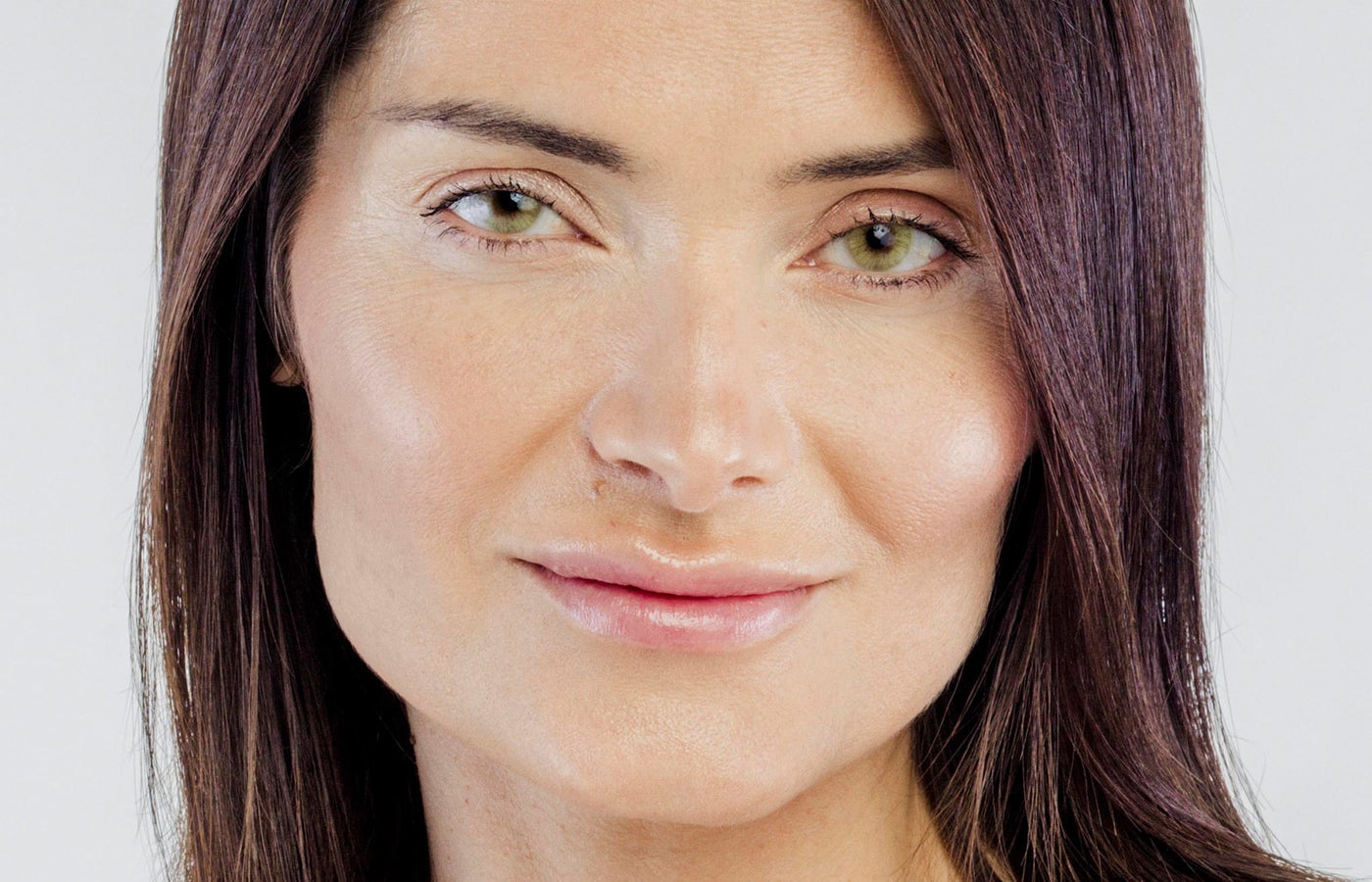Hyperpigmentation
Hyperpigmentation is one of the most common skin concerns. Learn more about what it is and why it happens. Then compare the top hyperpigmentation treatments—from retinoids to laser treatments and chemical peels—and shop skin-care solutions.
Hyperpigmentation is one of the most common skin concerns. Learn more about what it is and why it happens. Then compare the top hyperpigmentation treatments—from retinoids to laser treatments and chemical peels—and shop skin-care solutions.
What causes it
Top treatments
Skin-care solutions


Hyperpigmentation describes an area of skin that’s darker than the skin around it. These spots or patches of excess pigmentation are usually harmless, but they can make your skin tone look uneven. This can happen anywhere on the body, but it’s especially common on the face, neck, hands, and other areas where skin regularly gets exposed to light.
Our skin gets its color from a pigment called melanin, produced by cells called melanocytes. When these cells produce excess pigment, it gets deposited in the skin’s top layer (the superficial epidermis) or deeper in the dermis.
As you might expect, deeper pigmentation is tougher to treat. “In some instances, there is no cure—but you can get improvement, with lifelong maintenance,” notes Dr. Jason Emer, a dermatologic surgeon in West Hollywood, California.
Hyperpigmentation happens in all skin tones, but it’s particularly prevalent in tan and brown skin (types IV through VI on the Fitzpatrick scale), which already contains high levels of melanin. In skin of color, strong hyperpigmentation treatments can make uneven pigmentation worse, so it’s key to find a dermatologist who’s experienced in treating deeply pigmented skin.
Related: Tried-and-True Hyperpigmentation Solutions for Every Skin Tone, According to Dermatologists
Dark spots and patches of hyperpigmentation can develop due to a variety of factors, including acne, hormone fluctuations, and sun damage.
- Postinflammatory hyperpigmentation (PIH) PIH can be caused by anything that breaks or irritates the skin, like acne, eczema, psoriasis, dermatitis, allergic reactions, or bug bites. The irritation creates inflammation that triggers an increase in melanin production. As the skin heals, a red, purple, brown, or black spot or patch can be left behind like a shadow. Related: What Causes Post-Acne Hyperpigmentation and How to Treat It Cosmetic treatments that evoke an inflammatory response, including lasers and strong chemical peels, can carry significant risk of PIH, but an experienced provider should be able to mitigate it.
- Melasma Hyperpigmentation can also show up as irregularly shaped brown patches of skin, known as melasma or chloasma. This skin discoloration is caused by hormonal shifts, stress, and medical conditions (like thyroid disease or lupus) that make skin more photosensitive. Melasma can be difficult—sometimes almost impossible—to fully resolve. It’s caused by often unavoidable internal factors, and pigment can be trapped deep within the skin. It’s more common in women and often crops up during pregnancy (sometimes known as “the mask of pregnancy”), when estrogen and progesterone overstimulate melanin production. Birth control pills and hormone replacement medications may also trigger it. Melasma usually appears on the forehead, nose, cheeks, and upper lip (“the melasma mustache”). Related: The Ultimate Guide to Understanding and Treating Melasma
- Pigmented spots: sunspots, age spots, or liver spots Sun exposure triggers melanin production, creating sunspots, age spots, and liver spots while worsening both PIH and melasma. UV light speeds up the production of melanin. These brown spots of hyperpigmentation can vary in size and shape, and they’re most common in areas that see a lot of sun, such as the face, shoulders, and hands. There is also evidence that blue light, which we’re frequently exposed to through our digital devices, can contribute to hyperpigmentation as well.
The most effective hyperpigmentation treatments boost skin cell turnover and remove old layers of skin, to make room for fresh new cells. Excess pigment is drawn to the skin’s surface and sheds away.
- Obagi Nu-Derm is a seven-piece skin-care collection featuring an ingredient that many experts consider to be the gold-standard treatment for hyperpigmentation: hydroquinone. Hydroquinone reduces the number of melanocytes (the pigment-producing cells) in the skin, effectively bleaching the areas where it’s applied. The Obagi Nu-Derm System contains 4% hydroquinone, which is a high enough percentage that it requires a prescription for use. The kit includes a cleanser, toner, moisturizer, and sunscreen. While hydroquinone is proven to effectively minimize hyperpigmentation, it is classified as a potentially dangerous skin allergen. You’ll want to consult with your doctor, to decide if it’s right for you (it’s not safe for those who are pregnant or breastfeeding). They may recommend a topical product containing another lightening agent, such as kojic acid or arbutin, instead. Find doctors who offer Obagi Nu-Derm
- Microdermabrasion is a minimally invasive, skin-exfoliating treatment that removes the top layer of skin through a vacuum attachment. Dead skin cells are lifted off the skin and into the device, leaving a brighter, more even-toned look to the complexion. Since the treatment is relatively gentle, it typically takes more than one treatment to see an improvement in hyperpigmentation. Find doctors who offer microdermabrasion
- Chemical peels are among the most popular hyperpigmentation treatments. Your provider may recommend a mild or medium-depth glycolic or TCA peel or a deeper phenol peel, depending on how much the acid solution needs to penetrate the skin to bring pigment to the surface. Pyruvic peels have also been proven to reduce discoloration, while Cosmelan—a skin-care system that combines an in-office chemical peel with the use of an at-home lightening cream—is another popular option, especially for melasma. Find doctors who offer chemical peels Related: 3 Pro-Strength Chemical Peels for Every Hyperpigmentation Problem
- Laser resurfacing is one of the most popular in-office treatments for targeting hyperpigmentation, mainly due to its notoriously dramatic results. The process heats up layers within the skin in order to kick-start the body’s healing response. When this happens, collagen production improves and hyperpigmentation is removed as damaged skin cells flake off. Laser resurfacing can also help with improving the appearance of wrinkles, scars, crepiness, and dull skin. Find doctors who offer laser resurfacing
- Tazorac (tazarotene) is one of the most effective topical retinoids available, according to dermatologists. Like Retin-A, it’s a vitamin A derivative that increases cell turnover and stimulates collagen growth, encouraging fresh new skin with a more even tone. It also treats psoriasis, reduces skin inflammation, and limits acne breakouts. Find doctors who offer Tazorac
- Intense pulsed light (IPL) uses various wavelengths of light to penetrate the skin without damaging the surface. The light targets discoloration, causing the pigmented areas to seemingly rise to the surface of the skin before flaking off. While studies have shown measurable improvement in patients using IPL to reduce hyperpigmentation, it often requires multiple treatments, spaced three to four weeks apart, to show significant results. In-office options, like BroadBand Light (BBL) or BBL Hero, that use IPL technology are risky for dark skin because melanin absorbs the light energy, making skin more likely to burn and potentially scar. Find doctors who offer IPL photofacials
Quality topical skin-care products with brightening and exfoliating ingredients can improve the appearance of hyperpigmentation and give you a more even skin tone, if you use them regularly.
One of the most common effective ingredients is niacinamide, a form of vitamin B3 commonly found in serums and moisturizers. Niacinamide blocks pigment granules from developing within skin cells in the dermis.
Azelaic acid, ascorbic acid (vitamin C), and licorice root extract can also reduce hyperpigmentation. These ingredients interfere with the enzyme (tyrosinase) that catalyzes melanin production. Derms recommend a potent vitamin C serum, in particular, as a mainstay in your skin-care routine.
Related: The 11 Best Skin-Care Products for Hyperpigmentation and Melasma, According to Derms
Many of the same acids in professional-strength chemical peels are also available over the counter, in weaker concentrations that can still be effective over time. Alpha hydroxy acids (like glycolic acid and lactic acid) exfoliate old skin cells to make room for the new.
Finally, your dermatologist may recommend an over-the-counter hydroquinone option. Doctors on RealSelf frequently suggest Melarase AM and Melarase PM creams by Kare Skin. But if you’re trying to steer clear of hydroquinone, a topical depigmenting cream, like Obagi Nu-Derm Clear FX, is a good option—it replaces hydroquinone with arbutin and antioxidants in order to brighten the skin.
Sun protection is key to preventing future hyperpigmentation. Wear SPF 30-plus sunscreen daily and avoid prolonged sun exposure. Dr. Emer also recommends Heliocare antioxidant supplements, for internal protection from free radicals.
Related: The 8 Best Sunscreens for Melasma and Hyperpigmentation
Updated July 2, 2021





